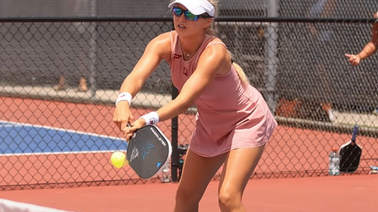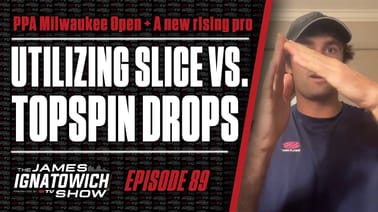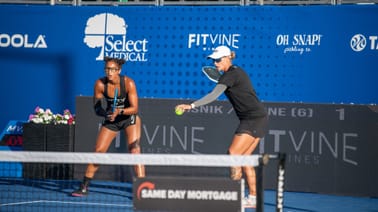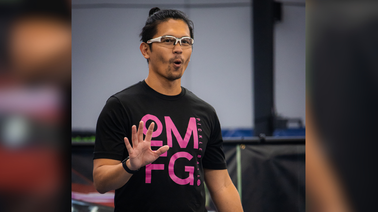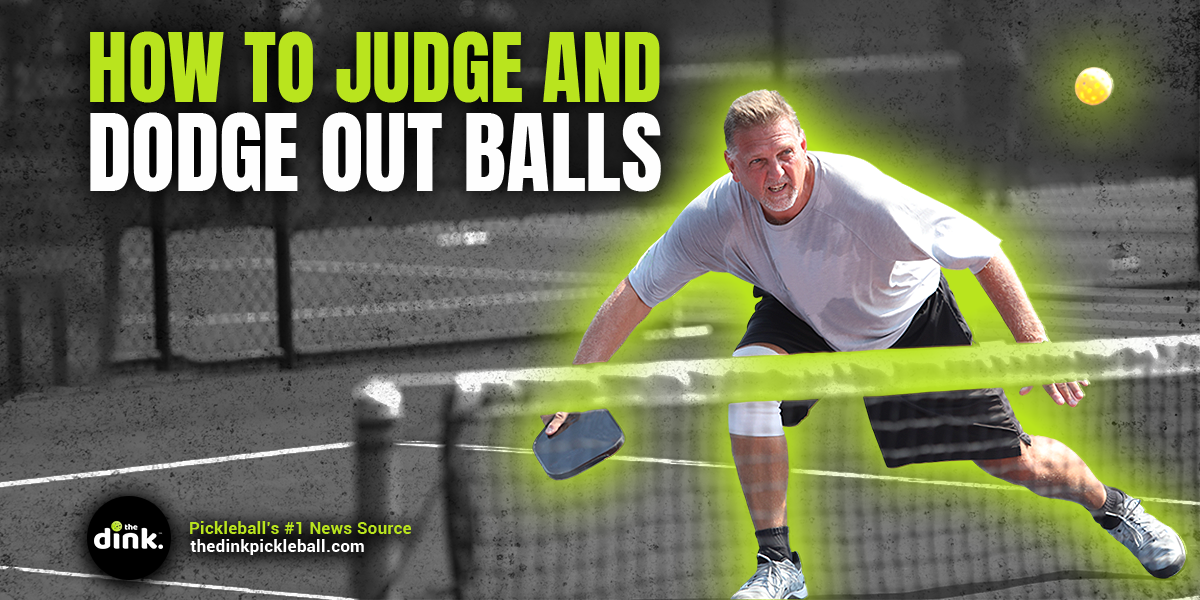
Every year, a new powerful pickleball paddle hits the market. Last year, it was the Gearbox Pro. This year, it’s the new JOOLA Gen 3s. While we’re not here to tell you whether or not you should purchase or use one of these powerful paddles, we are ready to nominate 2024 as the “Year of the ‘Out’ Ball” because of them.
While we’ve covered the topic of letting out balls go before, we thought it was a good time to add to that advice and give you even more ways to recognize when to let a ball go out.
This guide is about learning to judge and dodge out balls even before your opponent hits them.
The number one skill to learn in 2024
Hitting rocket drives in pickleball is fun. It’s even more fun when your paddle is as powerful as Thor’s hammer. Over the next couple of weeks, many players who previously held control-oriented paddles will start using these new JOOLAs, and they’ll be anxious to test how hard they can hit the ball.
Eventually, they’ll discover how to control their newfound power, but until then, you’re their test dummy.
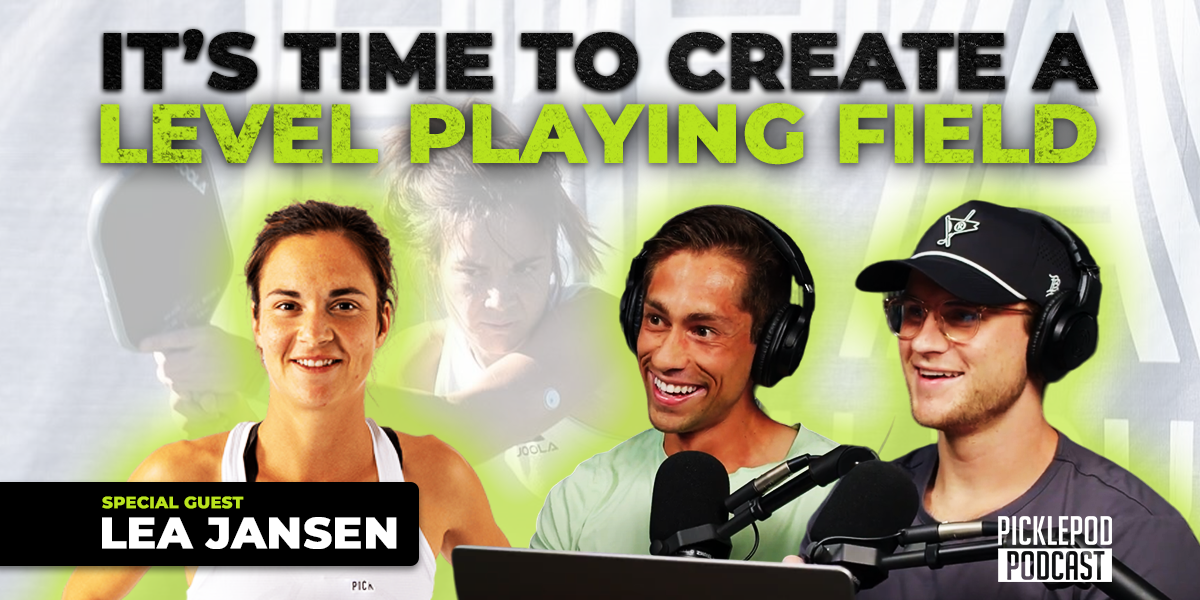
Besides investing in a good pair of protective eyewear, the best thing you can do for yourself and your pickleball game is hone your ability to get out of the way.
Don’t wait until the ball is hit
Most players make the mistake of waiting until a ball is hit to judge whether it’s in or out.
This is too late.
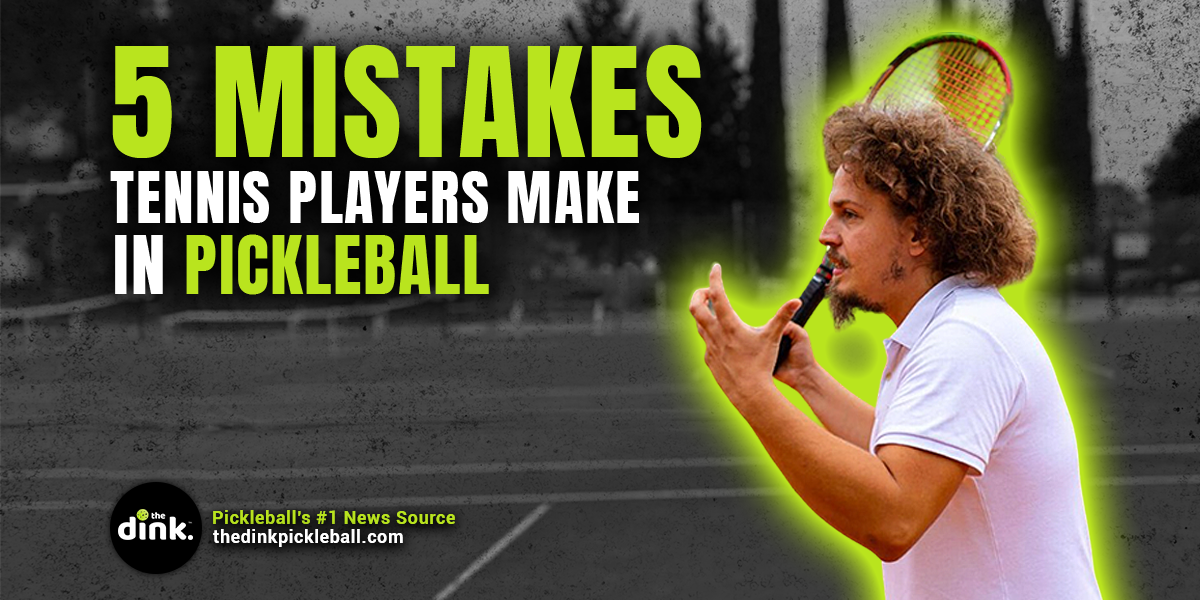
Once a ball is struck, especially on a drive, we have – at best – a half second to respond. That’s not enough time. Instead, the key to recognizing an out ball is to look for signs early. You must read your opponent’s body positioning and language (yes, just like poker) to prepare yourself for what is likely coming your way.
Here are some things you want to look for when judging whether or not someone is about to hit the snot out of the ball:
- A big backswing
- Turned hips and feet
- A paddle pause
- Chin down, eyes narrowed
Let’s take a look at each of these individually.
A big backswing
A big backswing in pickleball is almost always an overhit and one of the sure signs that a drive is coming.
If you see your opponent’s paddle go back behind their body, expect that a drive is coming. If they happen to change course and drop the ball instead, you’ll have plenty of time to react.
The next part is judging whether a drive is rising or falling as it starts to pass the net.
If it’s still rising (meaning they hit up on the ball), then there’s a very solid chance it’ll be out. If it’s falling (meaning they add topspin), you need to counter.
Another tell is how low the ball was to the ground when they struck it. If it barely bounced, then it’s likely going to keep rising. If it bounced high, they could add topspin more easily.
Turned hips and feet
When someone positions their body where one foot is well in front of the other, and their hips (or chest) face the sideline, a drive is much more likely than a drop. As soon as you recognize your opponent is in this position, prepare your mind to dodge or duck if the ball is chest high or above.
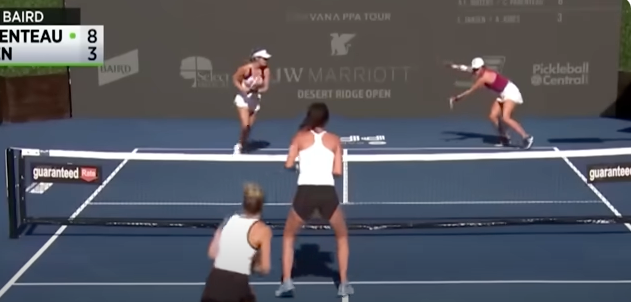
In this image, you can see Catherine Parenteau in the top right corner, with her body turned almost completely to the sideline. There is zero percent chance she is dropping the ball here. This is a drive all the way.
A paddle pause
Besides dodging a drive, we also want to look for errant speedups that will also carry out of bounds. One of the telltale signs that your opponent is about to speed the ball up at you is they will hold (or pause) their paddle right before contact.
It’s almost like a mechanical glitch.
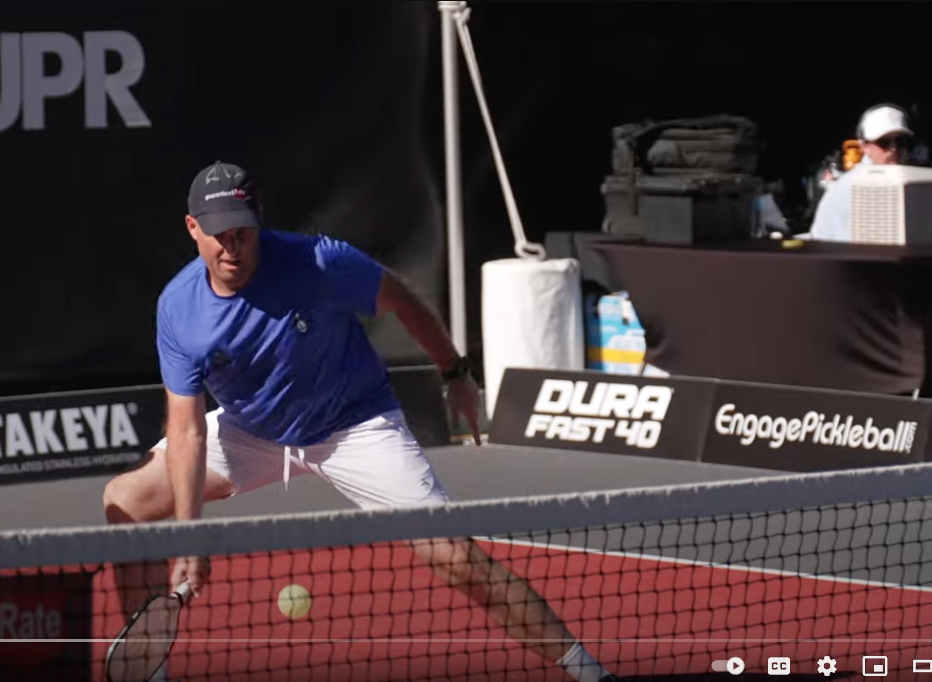
In this image of pickleball pro Matt Wright, you can see this slight pause with his paddle. While you may not know if it will be a speedup or a dink against a pro, against an amateur, this will almost always be a speedup.
While some higher-level players may do it to fool you into thinking a speedup is coming, most players aren’t going to be that advanced.
After a dink, if you see a player set their paddle down early and then pause, prepare for a speedup. By being ready, you can let high ones go out and counter those that are within your reach. If they are deceiving you and send a dink instead, you’ll have plenty of time to recover.
Chin down, eyes narrowed
Most players don’t work at hiding their intentions. When a player is about to hit a third shot, they may lower their chin and narrow their eyes. Their muscles even tighten with the anticipation.
They may even snarl and grit their teeth.
When your opponent’s face turns from neutral to predatorial, prepare for something hard and fast.
Tell yourself that if the ball is above a certain level (chest, nipples, where you’re currently holding your paddle, etc.), you’ll move out of the way and let it go.
You can even begin your defensive slide and prepare your paddle for a counter in case it’s a good one.
Set your paddle and your mindset early
One key to having a solid countering technique that’s not talked about or practiced nearly enough is setting your paddle and your mindset early.
For instance, if you know that someone drives the ball every time, why not have your paddle, body, and mind ready in advance?
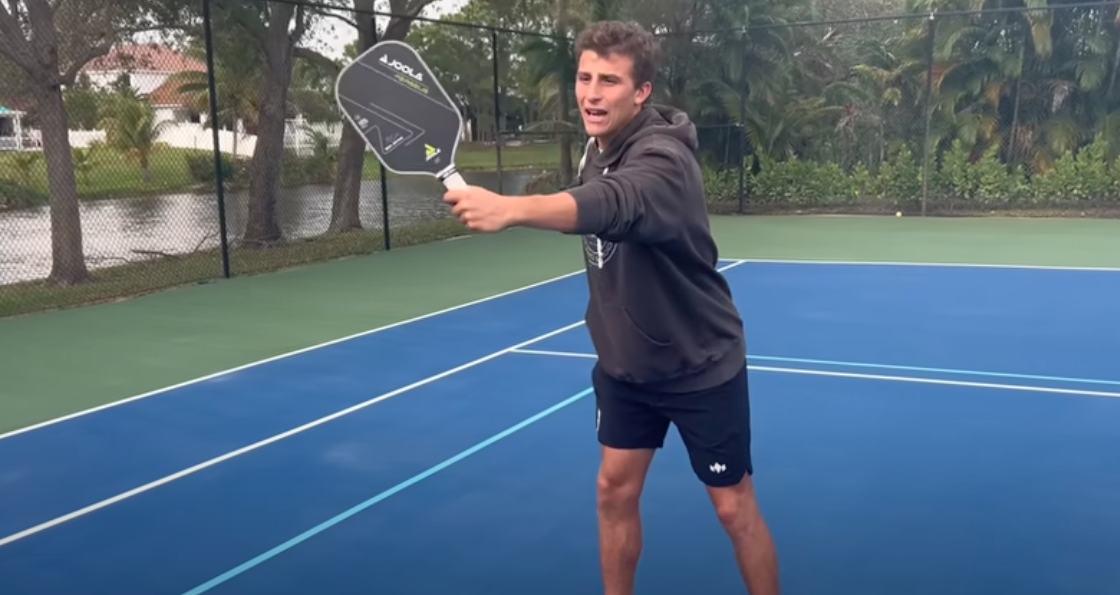
Tanner from Tanner Pickleball does a great job explaining this in a video on how to beat bangers.
Keeping your paddle out in front of you and setting it for a defensive counter will prevent you from overswinging and eliminate extra movement while the ball is in the air.
Similarly, telling yourself, “If a ball is above my paddle, I’m letting it go” will also help.
Sometimes, you’ll be wrong, and that ball will land in. That’s okay. As long as you’re correct more often than not, you have an advantage over your opponent.
Also, when they see that you are willing to let balls go out, they will have to change their game to counter it. Taking away someone’s confidence and making them second-guess themselves before every drive is a surefire way to win pickleball matches.
As paddles get stronger and stronger, the skill and know-how to judge an out ball early will become as important as learning to dink.
Do yourself a favor and start practicing now.
Oh, and consider getting yourself some eye protection.
|




